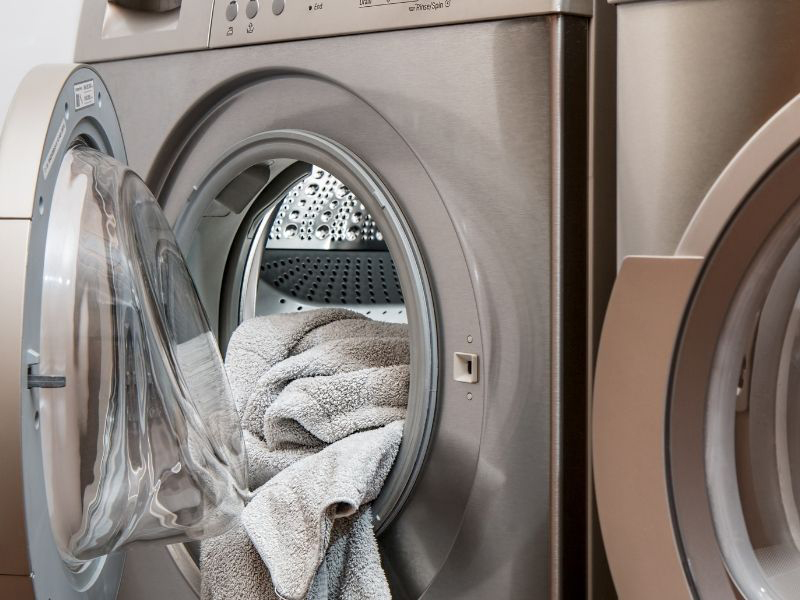I own three self-service laundries, and I’ve been plagued with dryer fires. I have the ductwork cleaned every three years. What can I do to prevent these fires? What am I missing?
One of the problems I notice in a lot of laundries is that the ductwork has been improperly installed right from the beginning. The installers very likely didn’t read the manufacturers’ manuals and, therefore, installed the exhaust ducts strictly to move air. However, there is another substance called lint, which also have to be moved out. And, as lint cools in temperature, it drop down and collects rapidly within the ductwork.
Therefore, my answer is to clean out your ductwork more frequently, or else change out your exhaust ducts. Of course, if you decide to alter your exhaust ducts, be sure to closely follow the manufacturer’s instructions.
While servicing my washers, my technician mistakenly reversed the hoses connecting the hot water and cold water to the machines, which caused dye release within a load of light gray and black garments. Is there any way I can remove the black dye from the light gray items without completely ruining these garments?
I suggest that you try soaking the garments in hydrogen peroxide and warm-to-hot water. Mix a solution using a quart of 3 percent hydrogen peroxide in 20 gallons of water. Soak the garments in this mixture for five to six hours, and then run the items through a normal, cold-water wash cycle.
If this process proves unsuccessful, my second suggestion would be to purchase a commercial-grade product called Stripene from your local chemical supplier. This should remove the black dye from those gray garments. Of course, be sure to receive – and closely follow – the usage instructions for this product.
I’m building a new laundromat, and I’m undecided as to whether or not I should install hard-mount or soft-mount washers. What would you suggest?
I would definitely recommend going with soft-mount, high-spin washers. These types of units are much easier and less expensive to install. In addition, with high-speed machines, they, in essence, will provide your new store with more capacity, because your customers will spend less time drying – as their clothes and other items already will be much drier coming directly out of the washer – and, thus, you will be able to get more customers through your laundromat at any given time.
The price of water in my area is ridiculously high and still rising. My washers are set to offer a pre-wash, a wash and three rinses. But I’m thinking of eliminating either the pre-wash or one of the rinse cycles. What do you think?
My first thought would be to increase your vend prices. However, if you feel a price increase would hurt your business too severely, eliminate the last rinse.
Your pre-wash should be set at a low water level anyway to maximize the use of chemicals, whereas the rinse cycle is generally set on a high level to maximize the removal of the chemicals and dirt that are suspended after the garments have been washed. It’s important to maintain your pre-wash and wash cycles to ensure proper stain removal.
In addition, by eliminating a rinse cycle, you’re not only saving on water but also electricity, because the rinse cycle is typically longer than the pre-wash cycle.
But, once again, I would strongly consider increasing vend prices before eliminating any cycles.













